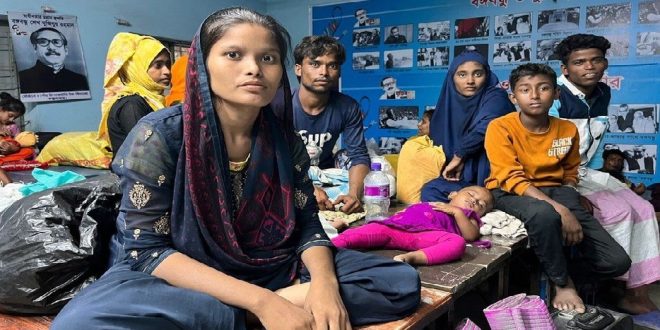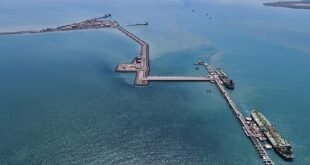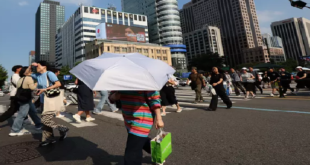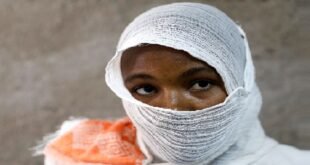15-05-2023
DHAKA: About half a million people are being evacuated to safer areas in south-eastern Bangladesh, ahead of a cyclone that could be extremely dangerous.
Mocha is predicted to make landfall at midday, with 170kph (106mph) winds and storm surges of up to 3.6m (12ft).
 There are concerns the cyclone could hit the world’s largest refugee camp, Cox’s Bazar, where close to a million people live in makeshift homes.
There are concerns the cyclone could hit the world’s largest refugee camp, Cox’s Bazar, where close to a million people live in makeshift homes.
Rains are already falling on the camp and red warning flags have been raised.
Cyclone Mocha could be the most powerful storm seen in Bangladesh in nearly two decades.
As the weather system heads towards the Bangladesh-Myanmar coast, nearby airports have been shut, fishermen have been told to suspend their work and 1,500 shelters have been set up, as people from vulnerable areas are moved to safety.
“We are ready to face any hazards… we don’t want to lose a single life,” Vibhushan Kanti Das, additional deputy commissioner at Cox’s Bazar, told media.
Throughout the day, families have been arriving at designated cyclone shelters. Hundreds have been packing into classrooms at a school in Cox’s Bazar.
Some brought plastic bags filled with a few of their possessions. Others arrived with their livestock, chickens and cattle.
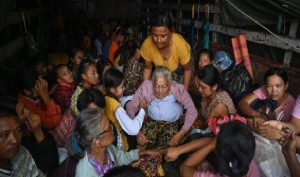 Jannat, 17, took a space on a classroom desk, along with her two-month-old baby. She brought a few clothes with her in a bag, but nothing else. Her husband was still at their coastal home, making sure things were safely secure before joining her.
Jannat, 17, took a space on a classroom desk, along with her two-month-old baby. She brought a few clothes with her in a bag, but nothing else. Her husband was still at their coastal home, making sure things were safely secure before joining her.
She said she was scared about this cyclone, after her home was damaged in Cyclone Sitrang last year too.
“I am worried about what comes next,’ Jannat told media.” I’m scared my home will be submerged again.”
Close to a million Rohingya refugees who have fled neighboring Myanmar (also known as Burma) remain at risk, living in flimsy bamboo shelters with tarpaulin covers. The UN says it is doing what it can to protect these areas.
Bangladesh’s government does not allow refugees to leave their camps, so many say they are frightened and unsure of what will happen if their shelters are hit by the storm.
Mohammad Rafique, 40, and his family live in one of the small bamboo shelters built for refugees.
Such shelters with tarpaulin roofing are unlikely to provide much protection from strong winds and heavy rains.
All we can do is pray to God to save us, Mohammad says. “We have nowhere to go for safety, and no-one to turn to.” (Int’l News Desk)
 Pressmediaofindia
Pressmediaofindia
